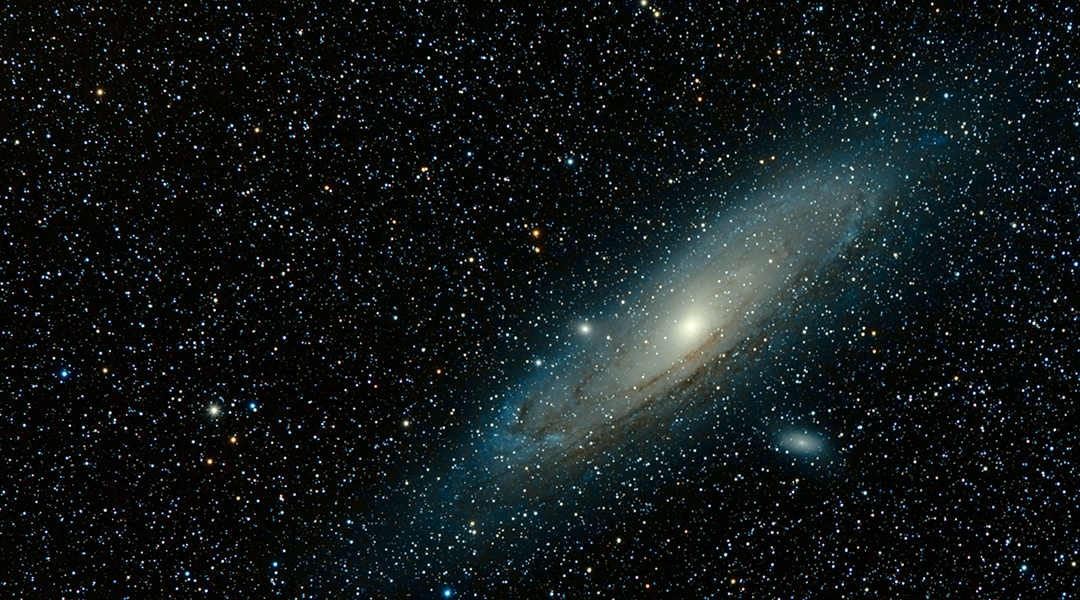Our modern understanding of astrophysics and cosmology is based on Einstein’s theory of general relativity, which explains gravity as a deformation of spacetime. Although this theory accurately describes gravity’s effects on the scale of planets, stars, and the Universe as a whole, it has certain shortcomings.
For one, in order for its predictions not to contradict observational data on the expansion of the Universe, one must assume that space is permeated with a mysterious entity called dark energy whose properties are unlike any known field, radiation, or particles.
“Cosmological observations [first made in 1998] revealed the accelerated expansion of the Universe,” explained Bivudutta Mishra, a professor at the Birla Institute of Technology and Science Pilani, Hyderabad Campus, in an e-mail. “Researchers believed that the presence of some exotic form of energy might be responsible for this behavior, and precise astronomical observations indicate that it occupies nearly 68.3% of the mass-energy budget of the entire Universe.”
The nature of dark energy is unknown and many physicists remain unconvinced of its credibility given the need to rely on this murky concept to help shore up the theory of gravity. Scientists have therefore considered alternative theories whose predictions match or are close to those given by Einstein’s theory, but do not require the dark energy assumption.
One of these theories, known as non-metric gravity, is similar to general relativity in the sense that it also describes gravity as a deformation of spacetime geometry, but it differs in the way matter is thought to interact and change it.
Due to this subtle difference, the gravitational effect of a physical object on other bodies at small distances remains almost the same as in general relativity, but at large distances it is quite different, meaning that the structure of the Universe these theories predict may differ as well.
Non-metric gravity
To find if this theory is consistent with observations on the Universe’s expansion without the need to introduce dark energy, Mishra and his colleague Shubham Narawade analyzed the cosmic evolution, assuming that gravitational interaction is properly described by the theory of non-metric gravity.
In their study published in Annalen der Physik, the team used non-metric gravity to study the geometry of spacetime theoretically and found the expansion rate of the Universe as it evolved. Then they compared their obtained solution to the actual rate of the Universe’s expansion determined using observations of different galaxies and supernovae made by the Hubble Telescope.
The result was that these predictions made using non-metric gravity agree with the astronomical data even better than those of general theory and don’t require the presence of dark energy in space to help bridge any gaps.

However, to confirm that non-metric gravity is indeed a viable alternative to Einstein’s theory, further experiments are needed, including measurements of gravitational effects on much smaller scales, where its agreement with observations is not as well established.
Although the results are encouraging, the team notes that the model they considered has possible variations in the details of the interaction between the geometry of space and matter, which in the future should also be theoretically studied and compared with observations to see if they would describe the real world even better.
Even on the largest of scales, the theory must correctly describe not only the rate of the expansion of the Universe, but also the fluctuations of the matter and microwave radiation densities that have been measured experimentally. Besides this, there is one more observational phenomenon that must be theoretically explained: The exponentially rapid expansion of the Universe in the first moments of its existence known as cosmological inflation.
These problems await their solution in the future.
Reference: Shubham A. Narawade, Bivudutta Mishra, Phantom cosmological model with observational constraints in f(Q) gravity, Annalen der Physik (2023), DOI: 10.1002/andp.202200626
Feature image credit: Guillermo Ferla on Unsplash

















